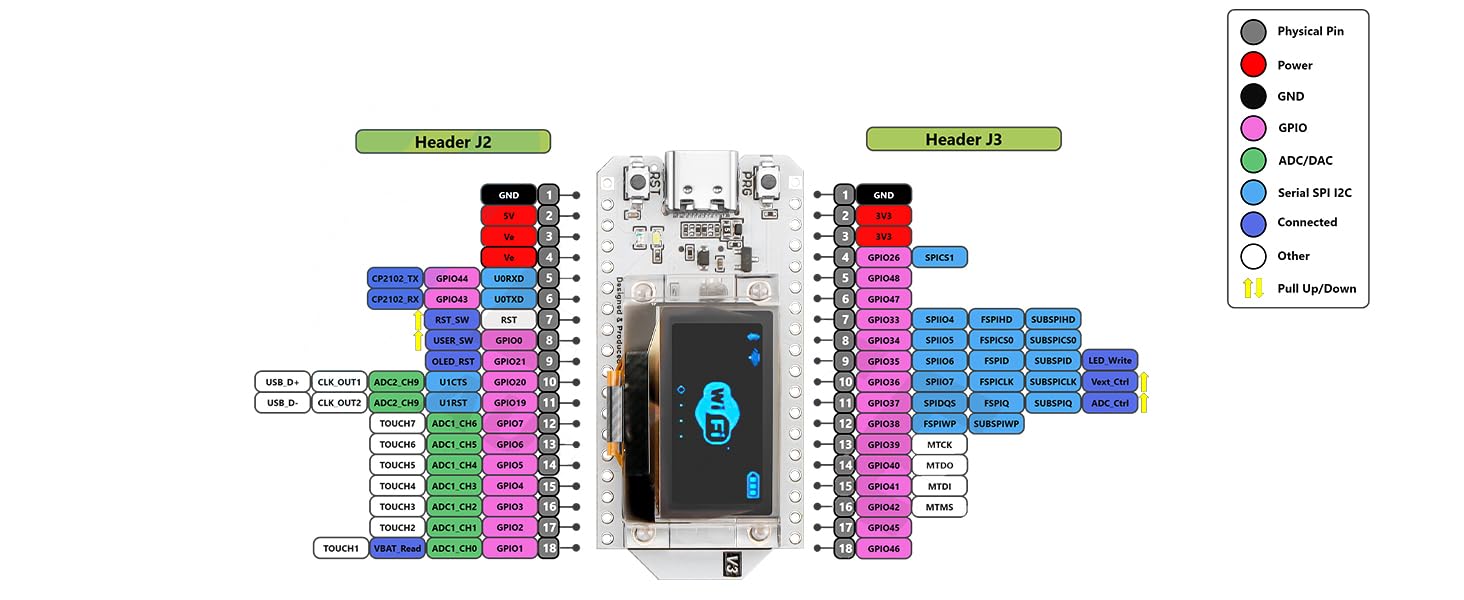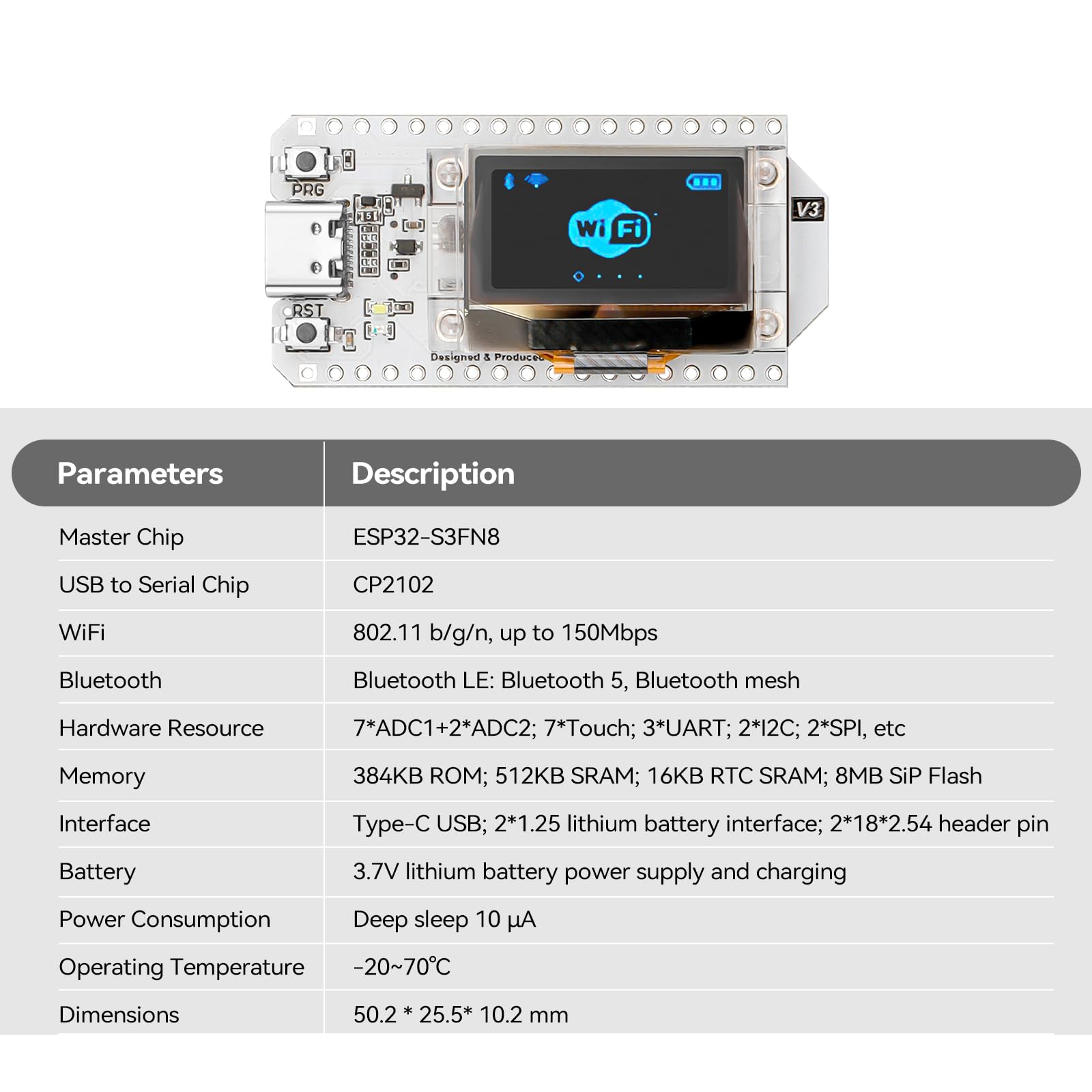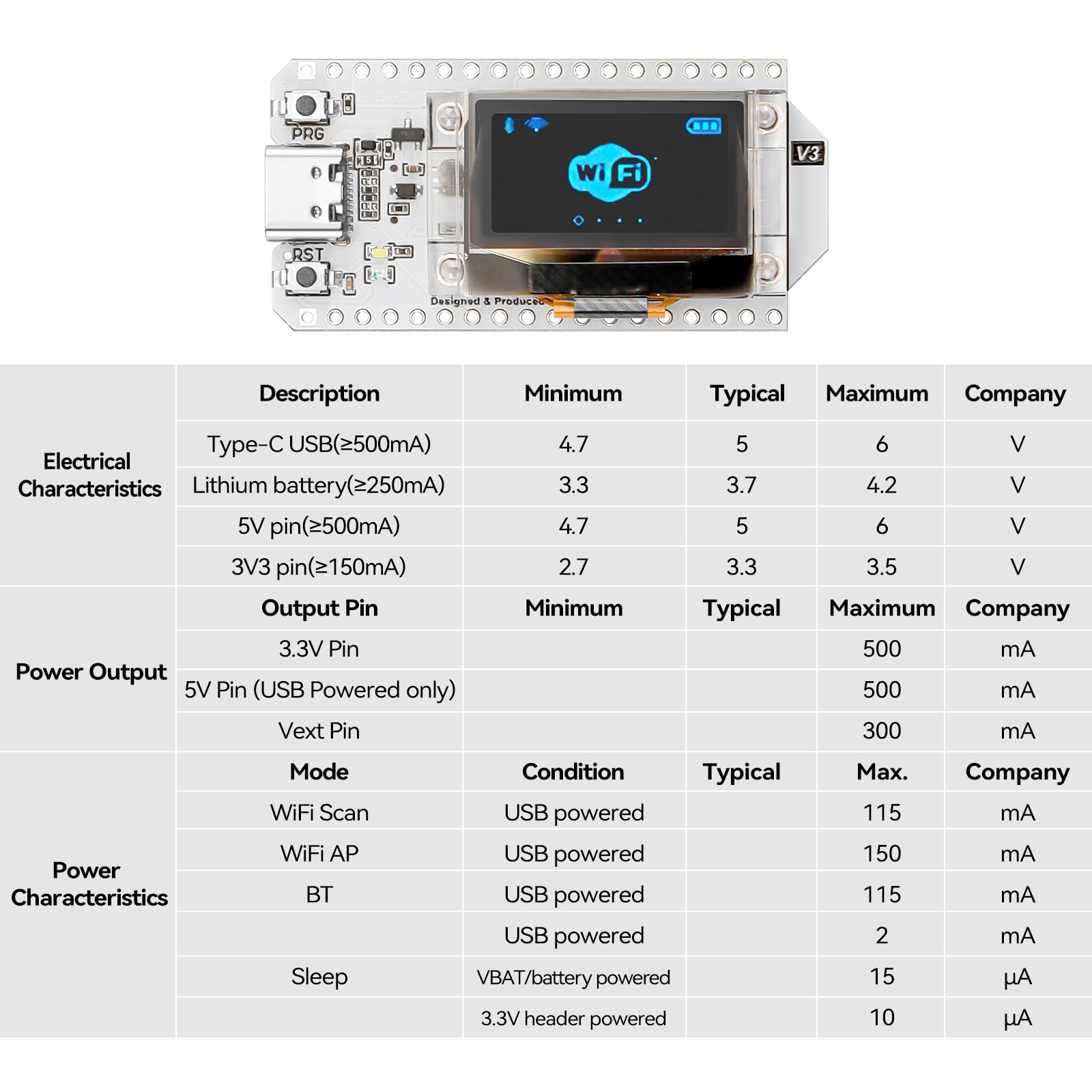Customer Services
Copyright © 2025 Desertcart Holdings Limited
Desert Online General Trading LLC
Dubai, United Arab Emirates









🚀 Elevate your IoT game with MakerFocus ESP32 OLED WiFi Kit V3 – where smart meets sleek!
The MakerFocus ESP32 OLED WiFi Kit V3 is a compact, highly integrated IoT development board featuring a dual-core 240 MHz ESP32 processor, onboard WiFi and Bluetooth 5 connectivity, and a 0.96-inch OLED display. Designed for seamless Arduino IDE compatibility, it includes a lithium battery management system with Type-C power input, making it ideal for smart city, home automation, and IoT maker projects.
| Processor | 240 MHz none |
| RAM | LPDDR |
| Memory Speed | 240 MHz |
| Wireless Type | 802.11abg |
| Brand | MakerFocus |
| Series | WiFi Kit 32 (V3) |
| Item model number | 8541612336 |
| Operating System | Arduino IDE (compatible with Windows, macOS, Linux), FreeRTOS (firmware) |
| Item Weight | 0.16 ounces |
| Product Dimensions | 1.97 x 1 x 0.05 inches |
| Item Dimensions LxWxH | 1.97 x 1 x 0.05 inches |
| Processor Brand | Espressif |
| Number of Processors | 2 |
| Voltage | 3.3 Volts |
| Manufacturer | MakerFocus |
| ASIN | B076KJZ5QM |
| Is Discontinued By Manufacturer | No |
| Date First Available | October 19, 2017 |
Trustpilot
2 weeks ago
1 week ago